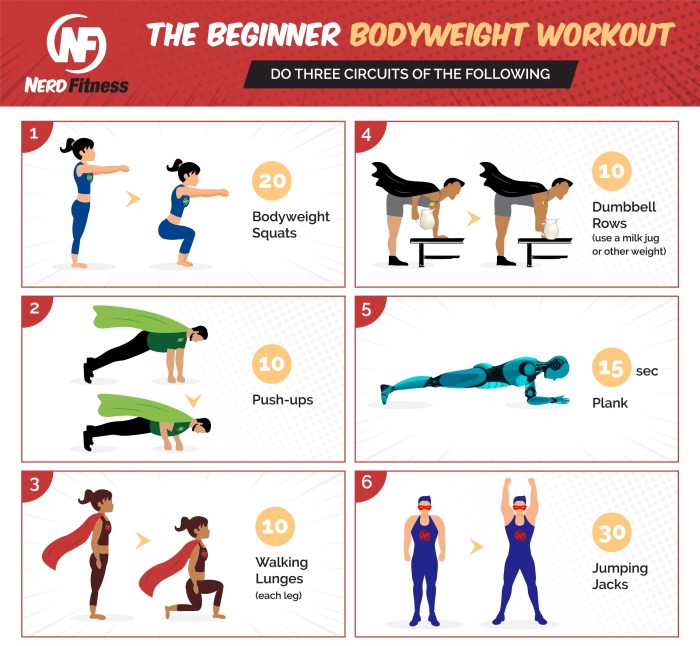Strength training for weight gain is an effective way to pack on muscle, boost metabolism, and improve overall health. By lifting weights, you can stimulate muscle growth, increase hormone production, and burn more calories. Whether you’re a beginner or an experienced lifter, strength training can help you achieve your weight gain goals.
In this guide, we’ll cover everything you need to know about strength training for weight gain, including the benefits, how to create a training program, exercises, nutrition, recovery, and more. We’ll also provide tips for avoiding common mistakes and staying motivated.
Introduction

Strength training, also known as weightlifting or resistance training, is a form of exercise that involves using weights to build muscle strength and endurance. It is an essential component of any weight gain program, as it helps to increase muscle mass, which in turn boosts metabolism and calorie expenditure.
There are different types of strength training exercises, each targeting different muscle groups. Some of the most common exercises include:
Compound Exercises
Compound exercises work for multiple muscle groups simultaneously, making them efficient and time-saving. Examples include squats, deadlifts, bench press, overhead press, and rows.
Isolation Exercises
Isolation exercises focus on a single muscle group, allowing for targeted development. Examples include bicep curls, tricep extensions, leg extensions, and calf raises.
Benefits of Strength Training for Weight Gain
Strength training is a highly effective way to gain weight. It helps build muscle, which is essential for increasing body mass. It also stimulates hormonal adaptations that promote muscle growth and increase metabolism.
Stimulation of Muscle Growth
When you perform strength training exercises, you damage muscle fibers. This damage triggers a repair process that leads to muscle growth. The amount of muscle growth that occurs is influenced by several factors, including the intensity and volume of your workouts, your diet, and your genetics.
Hormonal Adaptations
Strength training also stimulates hormonal adaptations that promote muscle growth. These adaptations include:
- Increased production of growth hormone (GH): GH is a hormone that stimulates muscle growth and fat loss.
- Increased production of testosterone: Testosterone is a hormone that promotes muscle growth and strength.
- Increased production of insulin-like growth factor-1 (IGF-1): IGF-1 is a hormone that stimulates muscle growth and protein synthesis.
Increased Metabolism
Strength training also increases your metabolism. This means that you burn more calories at rest and during exercise. The increased calorie burn can help you gain weight, even if you don’t change your diet.
Designing a Strength Training Program for Weight Gain

Designing a strength training program for weight gain requires careful consideration of frequency, intensity, and volume. Progressive overload is essential for continuous muscle growth and strength development.
Frequency
Aim for 2-3 strength training sessions per week, with at least 48 hours of rest between sessions for muscle recovery.
Intensity
Choose weights that challenge you while maintaining good form. Aim for 8-12 repetitions per set, with the last 2-3 repetitions feeling challenging but achievable.
Volume
Volume refers to the total amount of weight lifted per session. Gradually increase volume over time by adding sets or repetitions to your workouts.
Progressive Overload
Continuously challenge your muscles by gradually increasing weight, sets, or repetitions over time. This forces your body to adapt and build muscle.
Sample Strength Training Program for Weight Gain
Monday:Upper Body Tuesday:Rest Wednesday:Lower Body Thursday:Rest Friday:Upper Body Saturday:Lower Body Sunday:Rest
Nutrition for Weight Gain
In conjunction with strength training, a calorie surplus is necessary for weight gain. Focus on consuming nutrient-rich foods, such as lean protein, whole grains, fruits, and vegetables.
| Principle | Description |
|---|---|
| Frequency | 2-3 sessions per week |
| Intensity | 8-12 repetitions per set |
| Volume | Gradually increase sets or repetitions |
| Progressive Overload | Continuously challenge muscles |
| Nutrition | Calorie surplus and nutrient-rich foods |
“Strength training is a highly effective method for increasing muscle mass and strength, which can lead to significant weight gain when combined with a calorie surplus.”
– National Strength and Conditioning Association
Exercises for Strength Training

To effectively gain weight through strength training, selecting the right exercises is crucial. Exercises can be categorized into compound and isolation movements, each targeting different muscle groups and contributing to overall strength development.
Compound exercises involve multiple muscle groups simultaneously, making them highly efficient for building muscle mass. Isolation exercises, on the other hand, focus on a single muscle group, allowing for targeted development and refinement.
Compound Exercises
- Barbell Squat:A full-body exercise targeting the quads, glutes, hamstrings, and core. Stand with feet shoulder-width apart, lower the barbell by bending at the knees and hips, keeping the back straight. Return to the starting position by extending the legs.
- Bench Press:A compound exercise for the chest, triceps, and shoulders. Lie on a bench with feet flat on the floor, lower the barbell to the chest, then press it back to the starting position.
- Deadlift:A full-body exercise targeting the back, glutes, hamstrings, and quads. Stand with feet hip-width apart, lower the barbell by bending at the hips and knees, keeping the back straight. Return to the starting position by extending the legs and hips.
- Overhead Press:An exercise for the shoulders, triceps, and upper back. Stand with feet shoulder-width apart, hold the barbell overhead with an overhand grip, then lower it to the shoulders. Press the barbell back to the starting position.
- Row:An exercise for the back, biceps, and shoulders. Stand with feet shoulder-width apart, hold the barbell with an underhand grip, and pull it towards the chest. Return the barbell to the starting position by extending the arms.
Isolation Exercises
- Bicep Curl:An exercise for the biceps. Stand with feet shoulder-width apart, hold a dumbbell in each hand, and curl the dumbbells towards the shoulders. Lower the dumbbells back to the starting position.
- Triceps Extension:An exercise for the triceps. Sit on a bench with feet flat on the floor, hold a dumbbell in each hand, and extend the dumbbells overhead. Lower the dumbbells back to the starting position.
- Leg Extension:An exercise for the quads. Sit on a leg extension machine, place your feet on the platform, and extend your legs against the resistance. Lower your legs back to the starting position.
- Leg Curl:An exercise for the hamstrings. Lie on a leg curl machine, place your feet on the platform, and curl your legs towards the glutes. Lower your legs back to the starting position.
- Calf Raise:An exercise for the calves. Stand with feet shoulder-width apart, raise up onto your toes, then lower back down.
Nutrition for Strength Training and Weight Gain

Fueling your body with the right nutrients is crucial for maximizing the benefits of strength training and achieving your weight gain goals. This involves consuming adequate calories, protein, and other essential nutrients to support muscle growth and recovery.
To gain weight, you need to consume more calories than you burn. The number of calories you need will vary depending on your body weight, activity level, and metabolism. A general rule of thumb is to increase your daily calorie intake by 300-500 calories.
Macronutrient Ratios
Macronutrients are the building blocks of your diet and include carbohydrates, protein, and fat. The optimal macronutrient ratios for weight gain and muscle growth are:
- Carbohydrates:45-65% of total calories
- Protein:1.6-2.2 grams per kilogram of body weight
- Fat:20-35% of total calories
Sample Meal Plan
Here is a sample meal plan that supports strength training and weight gain:
- Breakfast:Oatmeal with fruit, nuts, and milk
- Lunch:Chicken breast with brown rice and vegetables
- Dinner:Salmon with quinoa and roasted vegetables
- Snacks:Protein shake, yogurt with fruit, or trail mix
Calorie and Macronutrient Targets
The following table provides recommended calorie and macronutrient targets for different body weights and activity levels:
| Body Weight (lbs) | Activity Level | Calories | Protein (g) | Carbohydrates (g) | Fat (g) |
|---|---|---|---|---|---|
| 150-175 | Sedentary | 1,800-2,000 | 120-140 | 225-250 | 60-70 |
| 150-175 | Moderately Active | 2,000-2,200 | 140-160 | 250-275 | 70-80 |
| 150-175 | Active | 2,200-2,400 | 160-180 | 275-300 | 80-90 |
| 175-200 | Sedentary | 2,000-2,200 | 140-160 | 250-275 | 70-80 |
| 175-200 | Moderately Active | 2,200-2,400 | 160-180 | 275-300 | 80-90 |
| 175-200 | Active | 2,400-2,600 | 180-200 | 300-325 | 90-100 |
Protein-Rich Foods
Protein is essential for muscle growth and repair. Good sources of protein include:
- Meat: Beef, chicken, pork, fish
- Poultry: Chicken, turkey
- Eggs
- Dairy: Milk, yogurt, cheese
- Legumes: Beans, lentils, chickpeas
Plant-Based Protein Alternatives
For those following a plant-based diet, there are many excellent protein alternatives available, such as:
- Tofu
- Tempeh
- Edamame
- Lentils
- Quinoa
Hydration
Staying hydrated is crucial for muscle recovery and growth. Aim to drink eight glasses of water per day, or more if you are exercising or sweating heavily.
Meal Timing and Frequency
The timing and frequency of your meals can impact nutrient absorption. It is recommended to eat three main meals and two to three snacks throughout the day. This helps ensure a steady supply of nutrients to your muscles.
Sample Grocery List
Here is a sample grocery list that includes nutrient-rich foods that support strength training and weight gain:
- Lean protein: Chicken, fish, beef, tofu
- Complex carbohydrates: Brown rice, quinoa, oatmeal
- Fruits: Bananas, apples, berries
- Vegetables: Broccoli, spinach, carrots
- Healthy fats: Avocado, nuts, olive oil
- Dairy: Milk, yogurt, cheese
Recovery and Rest
Rest and recovery are crucial for muscle growth. When you lift weights, you create tiny tears in your muscle fibers. These tears are what cause muscle soreness, and they also trigger the growth process. However, if you don’t give your muscles enough time to recover, they won’t be able to grow properly.Sleep is one of the most important factors in recovery.
When you sleep, your body releases hormones that help to repair muscle tissue. Aim for 7-8 hours of sleep per night.Stress can also interfere with recovery. When you’re stressed, your body releases the hormone cortisol, which can break down muscle tissue.
Find healthy ways to manage stress, such as exercise, yoga, or meditation.Here are some tips for promoting recovery and minimizing soreness:* Cool down after your workouts.This will help to reduce inflammation and muscle soreness.
- Stretch your muscles.Stretching can help to improve flexibility and reduce soreness.
- Get a massage.Massage can help to relax muscles and promote blood flow.
- Take an epsom salt bath.Epsom salt baths can help to reduce inflammation and muscle soreness.
- Eat a healthy diet.Eating a healthy diet will provide your body with the nutrients it needs to recover and grow.
- Drink plenty of water.Water is essential for hydration and recovery.
Supplements for Strength Training
Supplements can enhance strength training efforts, but it’s crucial to understand their potential benefits and drawbacks. Consulting with a healthcare professional before using supplements is essential for personalized advice based on individual health history and goals.
Creatine
Creatine is a natural substance that helps supply energy to muscles during high-intensity exercise. It may increase strength and power output. Benefits:
- Improved muscle strength and power
- Reduced muscle fatigue
Drawbacks:
- Possible gastrointestinal issues
- May interfere with kidney function in some individuals
Recommended Dosage:5-10 grams per day Safety Considerations:Consult with a healthcare professional before use, especially if you have kidney problems.
Protein Powder
Protein powder is a convenient way to increase protein intake, essential for muscle growth and repair. Benefits:
- Supports muscle growth and recovery
- May improve satiety
Drawbacks:
- Can be expensive
- May cause digestive issues in some individuals
Recommended Dosage:1.6-2.2 grams per kilogram of body weight per day Safety Considerations:Choose reputable brands and be aware of potential allergies.
Other Supplements
Other supplements that may support strength training include:
BCAAs (Branched-Chain Amino Acids)
May reduce muscle soreness and improve recovery
Glutamine
May enhance muscle recovery and immune function
Beta-Alanine
May buffer muscle acidity during exercise
| Supplement | Benefits | Drawbacks | Recommended Dosage | Safety Considerations |
|---|---|---|---|---|
| Creatine | Improved muscle strength and powerReduced muscle fatigue | Possible gastrointestinal issuesMay interfere with kidney function | 5-10 grams per day | Consult with a healthcare professional before use |
| Protein Powder | Supports muscle growth and recoveryMay improve satiety | Can be expensiveMay cause digestive issues | 1.6-2.2 grams per kilogram of body weight per day | Choose reputable brands and be aware of potential allergies |
| BCAAs | May reduce muscle soreness and improve recovery | Limited research on long-term effects | 10-20 grams per day | Consult with a healthcare professional if you have kidney problems |
| Glutamine | May enhance muscle recovery and immune function | Mixed research on effectiveness | 5-10 grams per day | Generally safe for most individuals |
| Beta-Alanine | May buffer muscle acidity during exercise | May cause tingling sensation | 2-5 grams per day | Generally safe for most individuals |
“Supplements can be beneficial for strength training, but they are not a replacement for proper nutrition and training. Always consult with a healthcare professional before using supplements.”
Registered Dietitian
Identify Common Mistakes Made by Beginners in Strength Training for Weight Gain
Beginners often make mistakes in strength training for weight gain, hindering their progress. Identifying and avoiding these common pitfalls is crucial for maximizing results.
Inadequate Calorie Intake
Many beginners underestimate the calorie surplus required for weight gain. To gain weight effectively, consume approximately 300-500 calories above your maintenance level. Calculate your maintenance calories using online calculators or consult a registered dietitian.
Insufficient Protein Intake
Protein is essential for muscle growth and repair. Aim for 1.6-2.2 grams of protein per kilogram of body weight daily. Include protein-rich foods like lean meats, poultry, fish, eggs, and dairy products in your diet.
Overtraining
Excessive training can lead to fatigue, injury, and burnout. Listen to your body and rest when necessary. Gradually increase training volume and intensity over time to avoid overtraining.
Improper Exercise Selection
Focus on compound exercises that work multiple muscle groups simultaneously. These exercises include squats, deadlifts, bench press, and rows. Isolation exercises can be incorporated as supplementary movements.
Poor Form
Incorrect form can reduce training effectiveness and increase the risk of injury. Learn proper exercise techniques from a qualified personal trainer or through reputable resources. Use a mirror or record yourself to check your form.
Lack of Consistency
Regularity is key in strength training. Aim for 2-3 strength training sessions per week, with rest days in between. Skipping workouts or training sporadically will hinder progress.
Neglecting Rest and Recovery, Strength training for weight gain
Adequate rest and recovery are crucial for muscle growth and repair. Get 7-9 hours of quality sleep each night. Incorporate active recovery activities like yoga, stretching, or light cardio on rest days.
Excessive Cardio
While cardiovascular exercise can be beneficial, excessive cardio can interfere with weight gain goals. Limit cardio sessions to 2-3 per week and keep the intensity moderate.
Inadequate Hydration
Proper hydration is essential for overall health and performance. Drink plenty of water throughout the day, especially before, during, and after workouts.
Ignoring Progressive Overload
Progressive overload is the gradual increase in training weight or resistance over time. This principle is crucial for continuous muscle growth and strength gains. Gradually increase the weight or resistance by small increments as you get stronger.
Advanced Techniques for Strength Training
To further enhance muscle growth and strength development, advanced training techniques can be incorporated into a strength training program. These techniques push the boundaries of traditional training methods and require careful implementation to maximize benefits while minimizing risks.
Drop Sets
Drop sets involve performing a set of an exercise to failure, then immediately reducing the weight and continuing to perform repetitions until failure again. This technique allows for more volume and intensity, leading to greater muscle fiber recruitment and hypertrophy.
- Benefits:Increased muscle growth, improved muscular endurance
- Risks:Increased fatigue, potential for overtraining
Supersets
Supersets involve performing two exercises back-to-back without rest. This technique combines exercises that target different muscle groups or work different muscle fibers. Supersets enhance muscle growth by increasing training intensity and time under tension.
- Benefits:Increased muscle growth, improved muscle endurance, enhanced calorie expenditure
- Risks:Increased fatigue, potential for overtraining
Forced Reps
Forced reps involve having a spotter assist you in completing additional repetitions beyond muscular failure. This technique is used to push the body past its limits and induce greater muscle growth. However, it should be used sparingly due to the high risk of injury.
- Benefits:Increased muscle growth, improved strength
- Risks:High risk of injury, potential for overtraining
Rest-Pause Training
Rest-pause training involves performing a set of an exercise, resting for a short period (15-30 seconds), and then continuing the set. This technique allows for greater intensity and volume, as the rest periods provide partial recovery. Rest-pause training is particularly effective for building strength and muscle mass.
- Benefits:Increased muscle growth, improved strength, reduced fatigue
- Risks:Increased potential for overtraining
| Technique | Benefits | Risks |
|---|---|---|
| Drop Sets | Increased muscle growth, improved muscular endurance | Increased fatigue, potential for overtraining |
| Supersets | Increased muscle growth, improved muscle endurance, enhanced calorie expenditure | Increased fatigue, potential for overtraining |
| Forced Reps | Increased muscle growth, improved strength | High risk of injury, potential for overtraining |
| Rest-Pause Training | Increased muscle growth, improved strength, reduced fatigue | Increased potential for overtraining |
When incorporating these advanced techniques, it’s crucial to consider factors such as training goals, fitness level, and exercise selection. Proper form and technique are paramount to minimize the risk of injury. Progression and regression of these techniques should be gradual to optimize results and prevent plateaus.
Monitoring Progress
Tracking progress is crucial for ensuring consistency and identifying areas for improvement. By monitoring your strength gains, muscle mass, and body composition, you can make informed adjustments to your training and nutrition plan.
Methods for Monitoring Progress
Here are several methods for monitoring progress:
- Strength Gains:Track the weight you lift during your workouts. As you progress, you should be able to lift heavier weights or perform more repetitions with the same weight.
- Muscle Mass:Measure your body circumference (e.g., biceps, chest, thighs) using a tape measure. You can also use a body composition analyzer to estimate your muscle mass.
- Body Composition:Calculate your body fat percentage using a body composition analyzer, calipers, or bioelectrical impedance analysis (BIA).
“Monitoring progress is like having a roadmap for your fitness journey. It allows you to stay on track, identify areas for improvement, and adjust your strategy as needed.”– Dr. Brad Schoenfeld, renowned strength and conditioning expert
Tips for Making Adjustments Based on Progress
Based on your progress, you may need to make adjustments to your training and nutrition plan. Here are some tips:
- If you’re not making progress in strength:Increase the weight you lift, add more sets or reps, or reduce your rest time.
- If you’re not gaining muscle mass:Increase your protein intake, focus on compound exercises, and ensure you’re getting enough sleep.
- If your body fat percentage is increasing:Reduce your calorie intake, increase your cardio, and make sure you’re getting enough fiber.
Variations in Strength Training: Strength Training For Weight Gain

Strength training has many variations, each with its own benefits and limitations. Incorporating these variations into your program can help you stay motivated and achieve your weight gain goals.
Circuit Training
Circuit training involves performing a series of exercises in succession, with little or no rest in between. This type of training is great for burning calories and building endurance. However, it can be challenging for beginners and may not be suitable for those with certain injuries.
HIIT (High-Intensity Interval Training)
HIIT involves alternating short bursts of high-intensity exercise with periods of rest or low-intensity exercise. This type of training is very effective for burning fat and building muscle. However, it is important to start slowly and gradually increase the intensity and duration of your workouts.
Bodyweight Exercises
Bodyweight exercises are exercises that use your own body weight as resistance. These exercises are great for building strength and endurance without the need for any equipment. However, they may not be as effective for building muscle mass as exercises that use external weights.Here are some examples of how to incorporate variations into your strength training program:
- Start with circuit training or bodyweight exercises to build a foundation of fitness.
- Gradually add HIIT workouts to your program to challenge yourself and burn more calories.
- Use a variety of exercises in your workouts to target different muscle groups and prevent boredom.
Closing Summary

Strength training is a powerful tool for weight gain and overall health. By following the principles Artikeld in this guide, you can build muscle, boost your metabolism, and improve your quality of life. So what are you waiting for? Get started today!
Commonly Asked Questions
How often should I strength train for weight gain?
Aim for 2-3 strength training sessions per week, with at least 48 hours of rest between workouts.
What exercises are best for strength training for weight gain?
Compound exercises like squats, deadlifts, bench press, and rows are excellent for building muscle mass.
How much weight should I lift for strength training for weight gain?
Choose a weight that challenges you while maintaining good form. Start with a weight that is 60-70% of your 1-rep max and gradually increase the weight as you get stronger.
How important is nutrition for strength training for weight gain?
Nutrition is crucial for weight gain. Aim to consume a calorie surplus of 300-500 calories per day, with a focus on protein intake of 1.6-2.2 grams per kilogram of body weight.
How can I avoid overtraining when strength training for weight gain?
Listen to your body and take rest days when needed. Avoid training to failure and ensure you get enough sleep and nutrition.
Leave a Reply